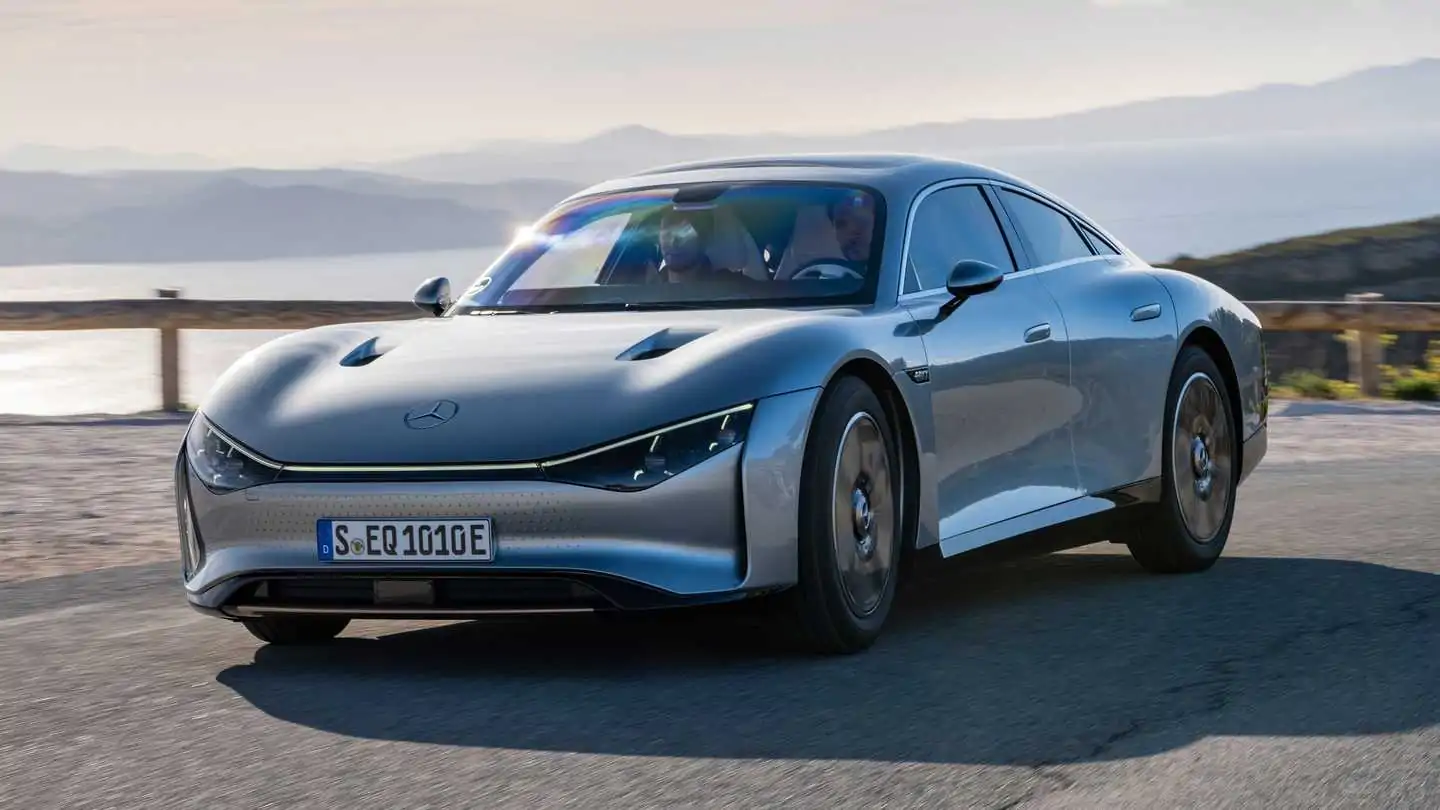 M-B’s future technologies are tested on the concept car, which is a compact and lightweight vehicle.
M-B’s future technologies are tested on the concept car, which is a compact and lightweight vehicle.
The Vision EQXX concept, Mercedes-Benz’s most efficient car ever, is more than a show car. This experimental electric vehicle will test future technology. It features an innovative 100-kilowatt hour air-cooled battery, simplified aerodynamics and efficiency-enhancing electronics in the cabin. It is estimated that the vehicle can travel more than 620 miles (1,099 km), and consumes 10 kWh/100 km (6.2 mi/kWh) of energy.
However, theoretical specifications are only as good the paper on which they were written. Mercedes-Benz put its idea to test with Mission EQXX, a 626-mile journey on public roads that runs from the Electric Software Hub (ESH), in Sindelfingen Germany to Cassis, France. This journey would involve significant elevation changes and two-lane roads with many miles of restricted Autobahn driving. The route would also be open to the public. It would subject the Vision to construction zones and traffic jams.
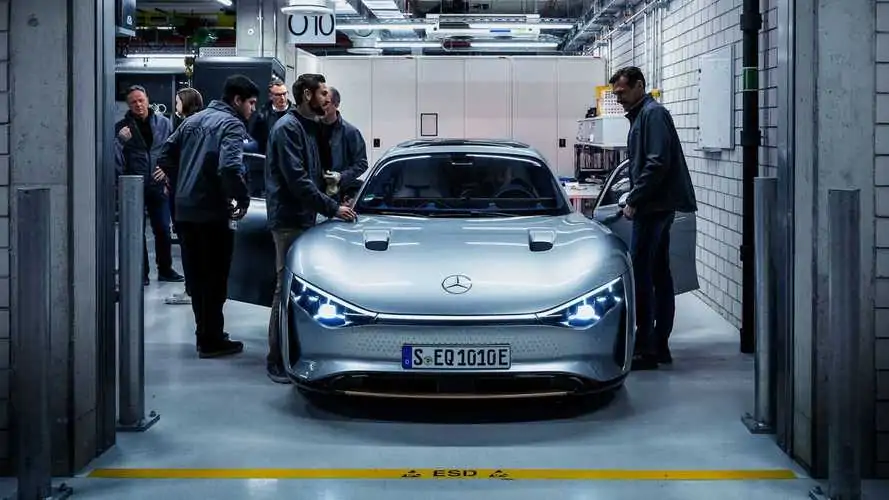
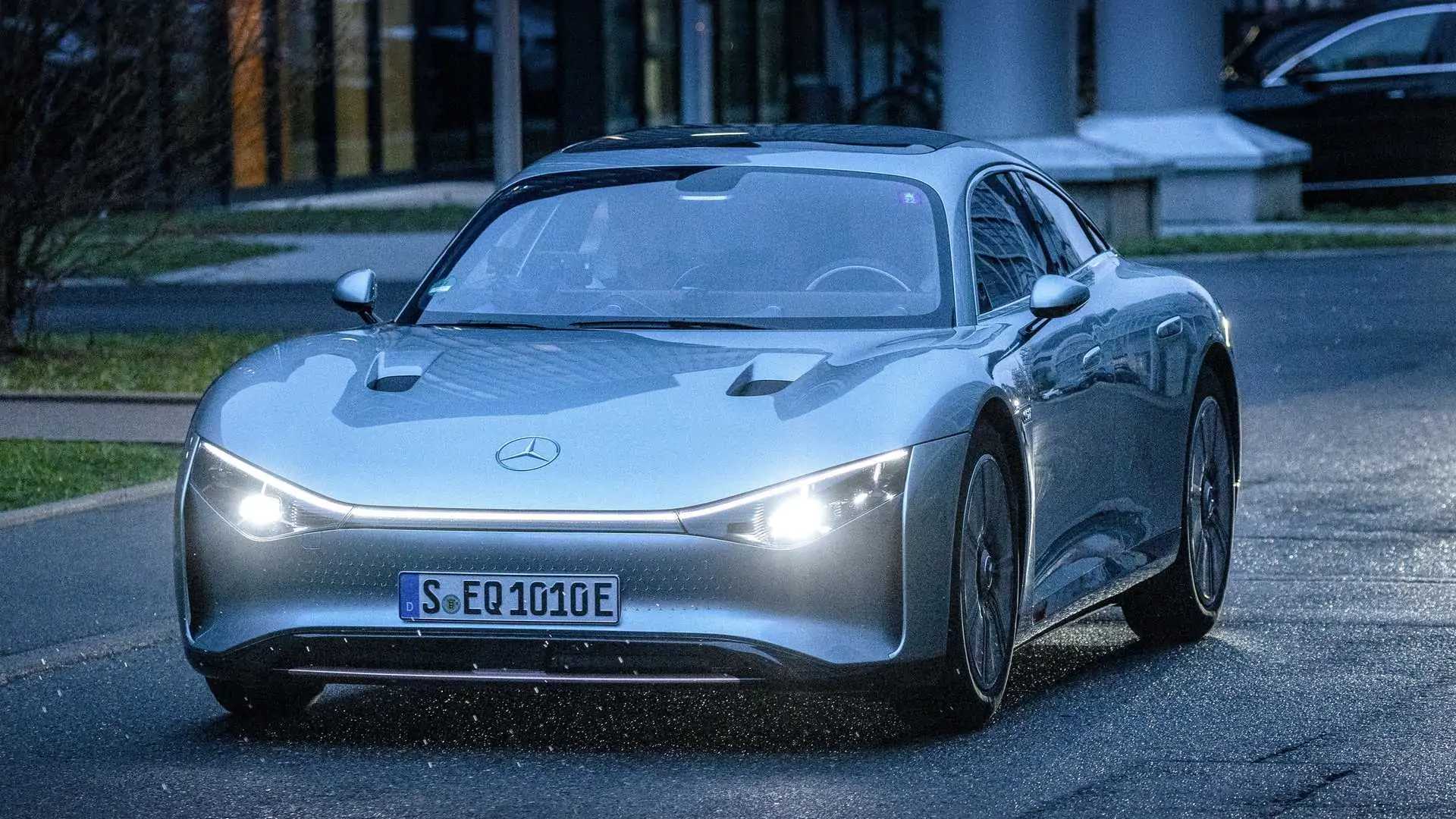
The Start Line
Mercedes’ latest facility, the ESH, houses the teams responsible for researching, developing, and evaluating the company’s infotainment and electric propulsion systems. It also hosts cloud-based services and advanced driver assistance. Although the facility has hundreds of employees, cooperation is also provided by Mercedes’ other development offices from Beijing to Bangalore to the Bay Area. The ESH houses many dynamic and simulated testbeds in addition to human resources.
One machine such as this tests an autonomous driving brain by feeding the computer the digital equivalent to a public roadway. Engineers can monitor the behavior of an autonomous vehicle when faced with pedestrians on the freeway. This simulation is displayed on a computer screen. A second location allows engineers to test how an electric vehicle will perform in different road conditions and climates. This simulation is where a lot of Mercedes-Benz’s research, development takes place before the car becomes roadworthy.
This made the ESH an ideal starting point for the VisionEQXX’s long journey to France. The car was already known to the engineers at the facility, so they could monitor its behavior remotely. A disembodied EQXXX computer, embedded in an EQB body, was actually running the exact same virtual route to the car as the real thing. This proved useful when a minor DC/DC converter problem on the Vision EQXXX came up. Sindelfingen engineers were able to identify the problem and then instruct real-world drivers how they could fix it remotely. All systems go. Mission Control.
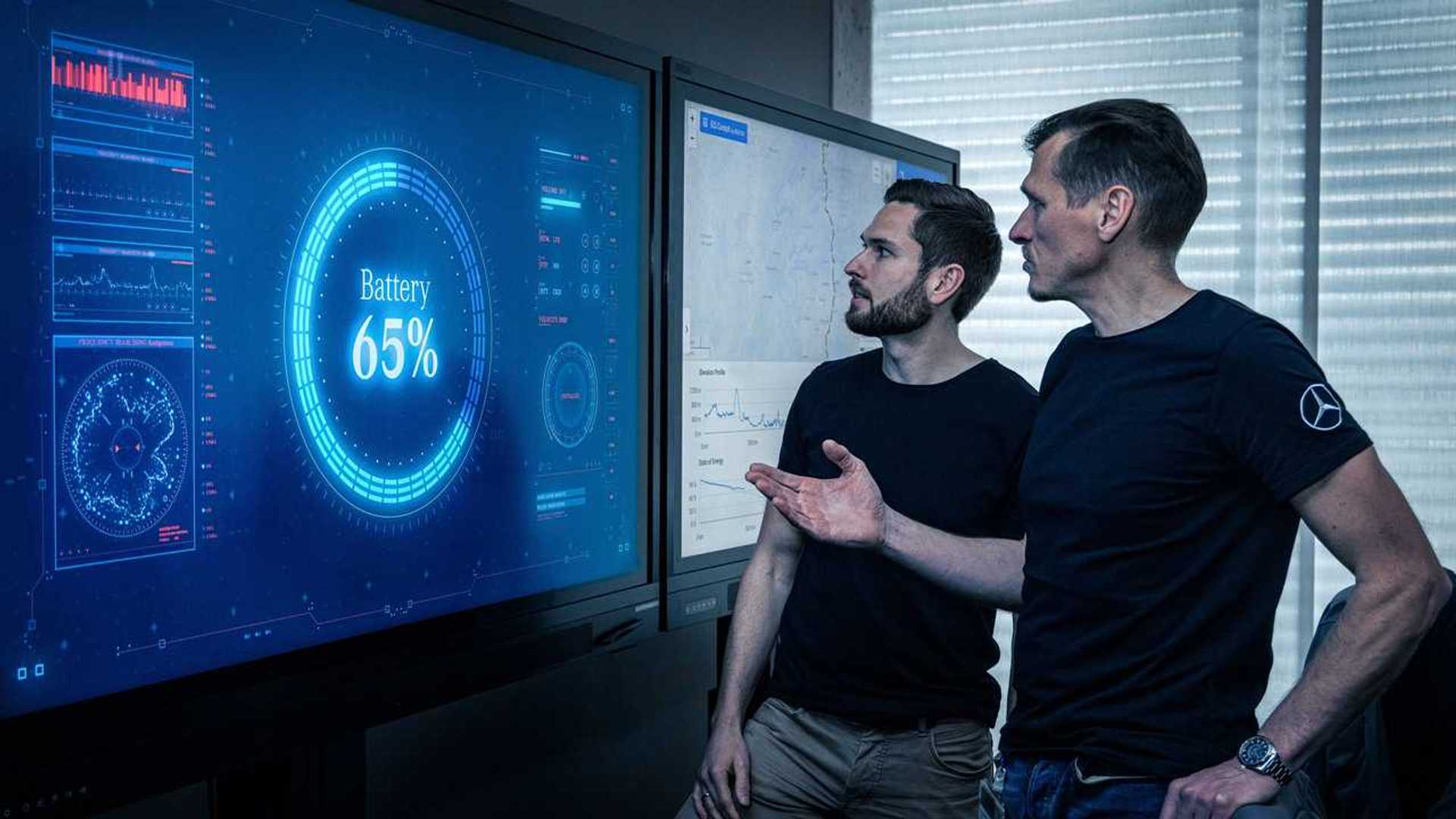
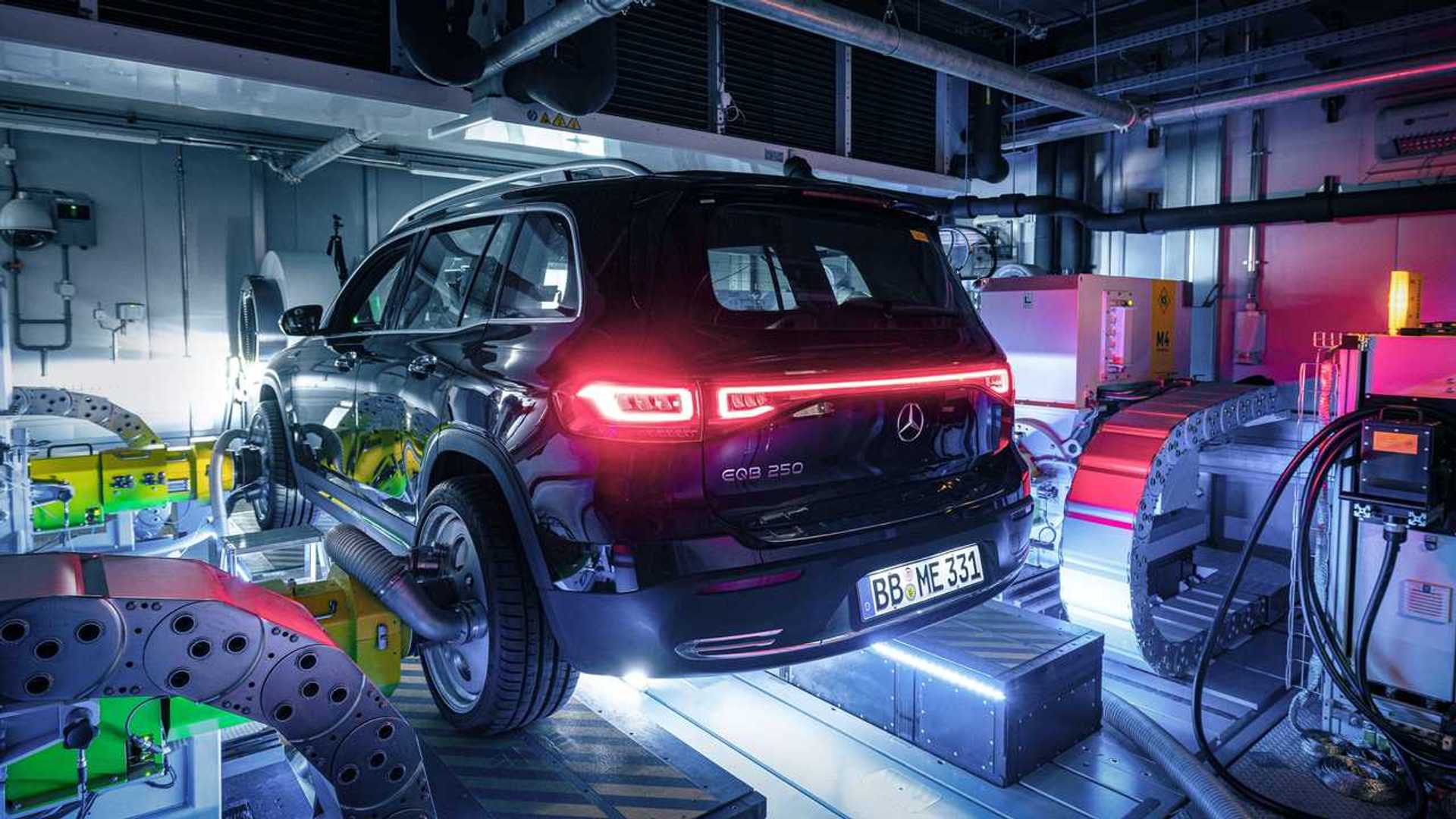
Vive La France!
Just before sunrise, the Mercedes-Benz Vision EQXX set off on the road. It traveled through Stuttgart before reaching the Autobahn unrestricted. The EQXX’s mission was to be efficient, but the drivers maintained a normal traffic flow, traveling at 87 miles an hour, just in time to catch Zurich’s morning traffic. The team faced its first major obstacle when it drove through the Gotthard Road Tunnel. This tunnel is known for its stop-and-go snarls, as well as a nine-mile-long, five percent grade. The team was able to conserve energy by carrying a comparablely light weight, 3,869 pounds unladen.
The Vision EQXX broke free from Gotthard’s traffic and began its descent towards Northern Italy. ‘s regenerative braking, was one of the EQS best features, came into its own. You can choose from different levels of regen. This allows drivers to coast smoothly on highway stretches and add a bit of recuperation when approaching slower traffic. The EQXXX’s extensive regenerative braking allows for the EQXXX to not engage its mechanical brakes as often as necessary, further reducing weight.
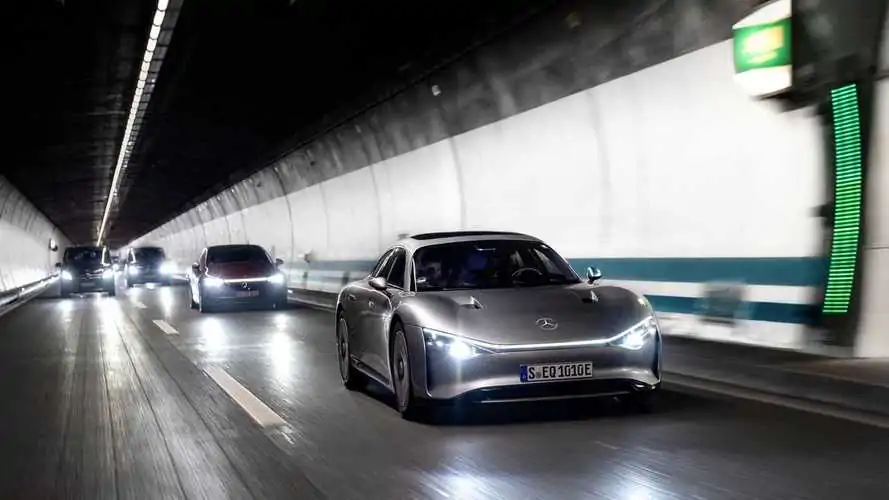
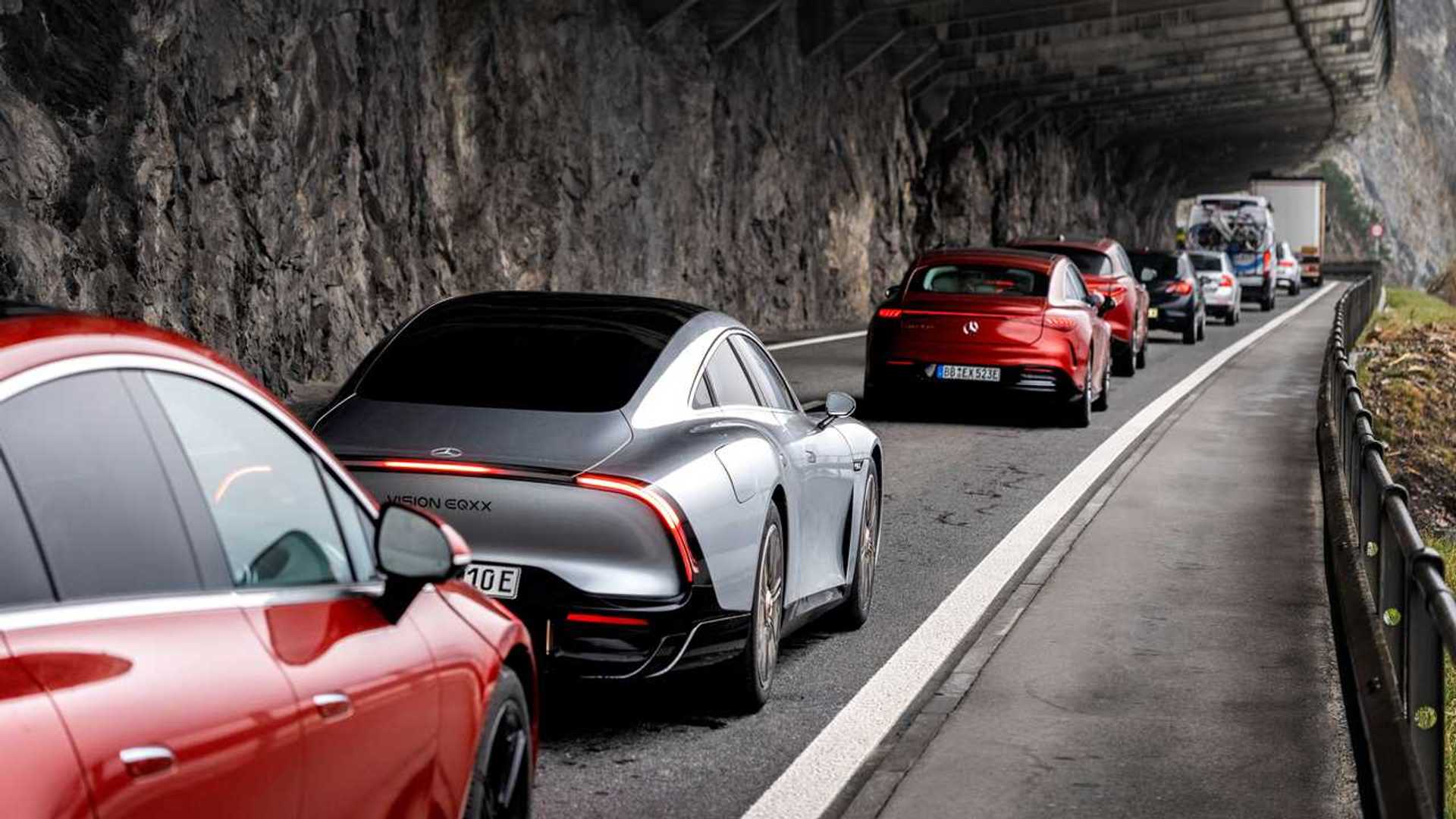
The trip was mostly done in typical Teutonic spring rainy conditions with ambient temperatures of 40 degrees. However, crossing the border to Italy from Switzerland brought the sun. The Vision EQXX’s roof feeds the 12-volt battery, which powers the car’s auxiliary features such as the infotainment system, navigation, power accessories and speakers. It boasts 117 solar cells with a 20 percent efficiency, an industry-leading figure in solar electricity production. The solar roof, according to Mercedes, can increase the range by 16 miles over a 621-mile trip. It also reduces the load on the drive battery.
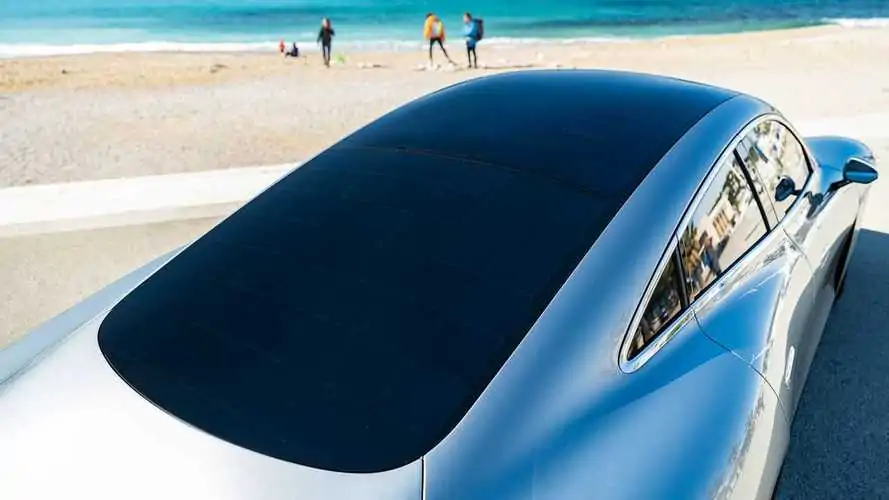
After 12 hours of driving, including two stops for 15 minutes to change drivers or check tire pressures, the Mercedes-Benz Vision EQXX sailed into Cassis, France. It is located on the beautiful Cote d’Azur. The EQXXX managed to cover 626 miles while driving on public roads. Despite being subjected to the same chilly conditions, rain, delays in road construction, traffic, and traffic, it still had a range of over 85 miles. The car’s average energy consumption was 7.1 miles/kWh (8.7 kWh/100km), which is a remarkable result that would translate to a staggering 239 miles per gallon on the EPA scale.
Show car to the Showroom
Mercedes claims that we will see some of Vision EQXX’s technologies as soon as the next-generation A and B-Class arrive with the new MMA compact vehicle architecture. The EQXX’s four-door design and overall length suggest it could evolve into the next generation C–Class.
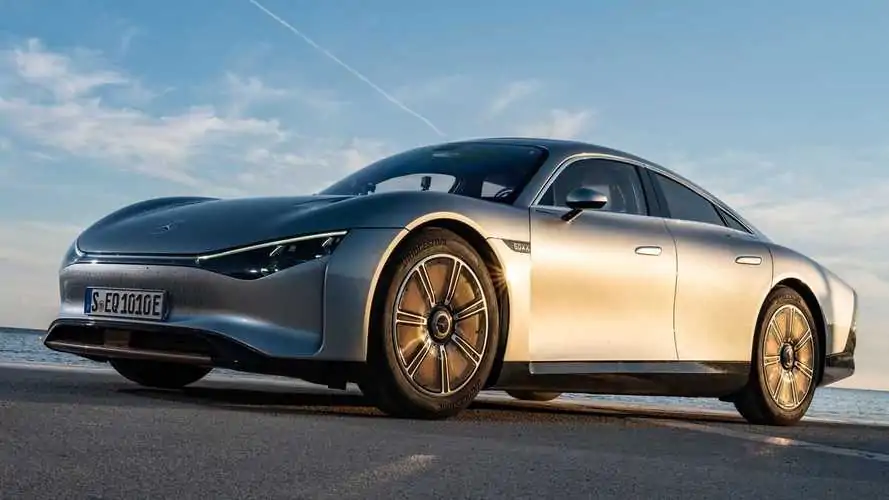
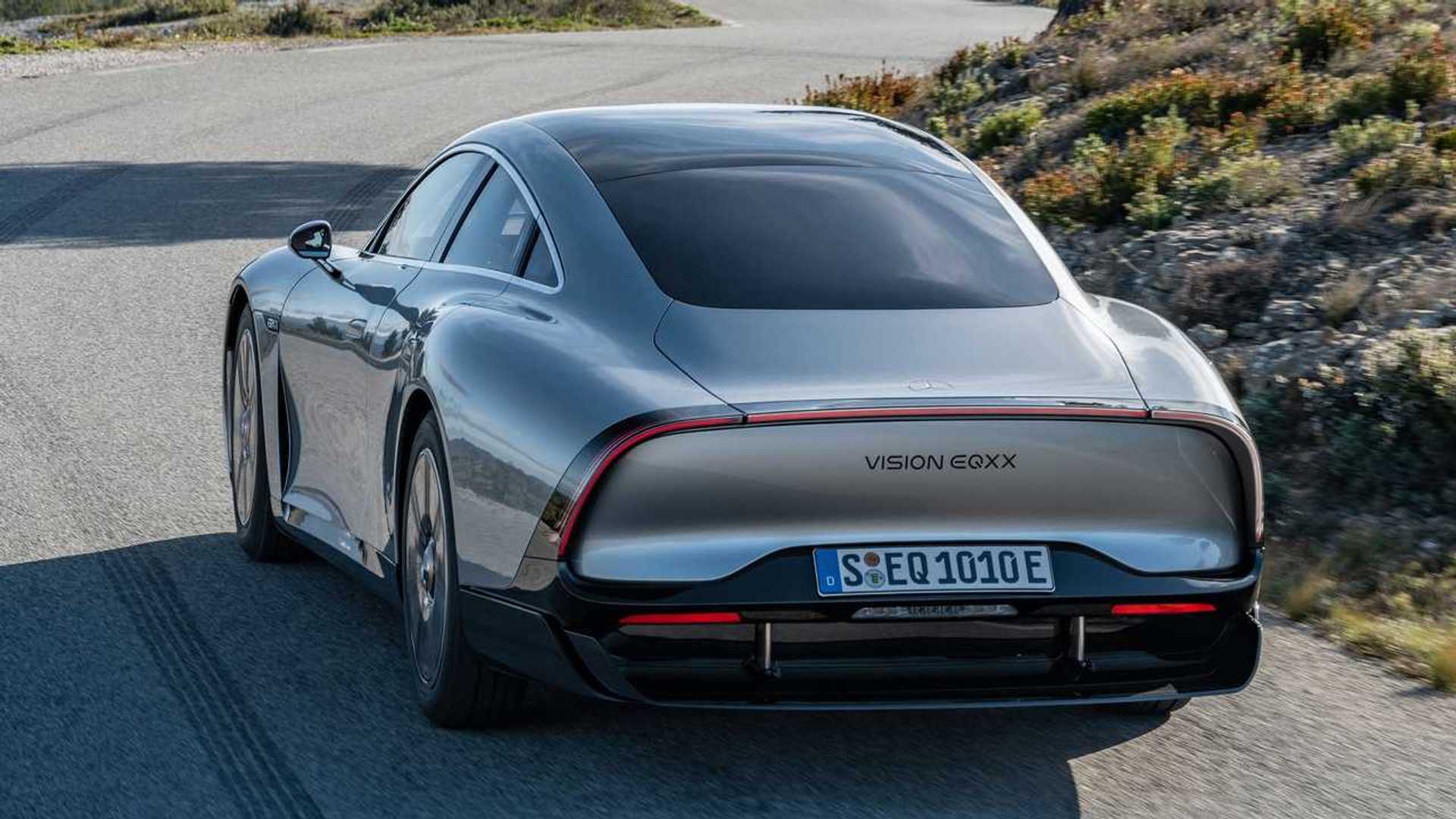
It remains to be seen if Mercedes’ future cars will look as sleek and modern as the Vision EQXXX. It is clear that Mercedes is working to make fully electric cars a compromise-free option. This combines long-range grand touring with small energy footprints and eco-chic design. Mission EQXXX achieved.